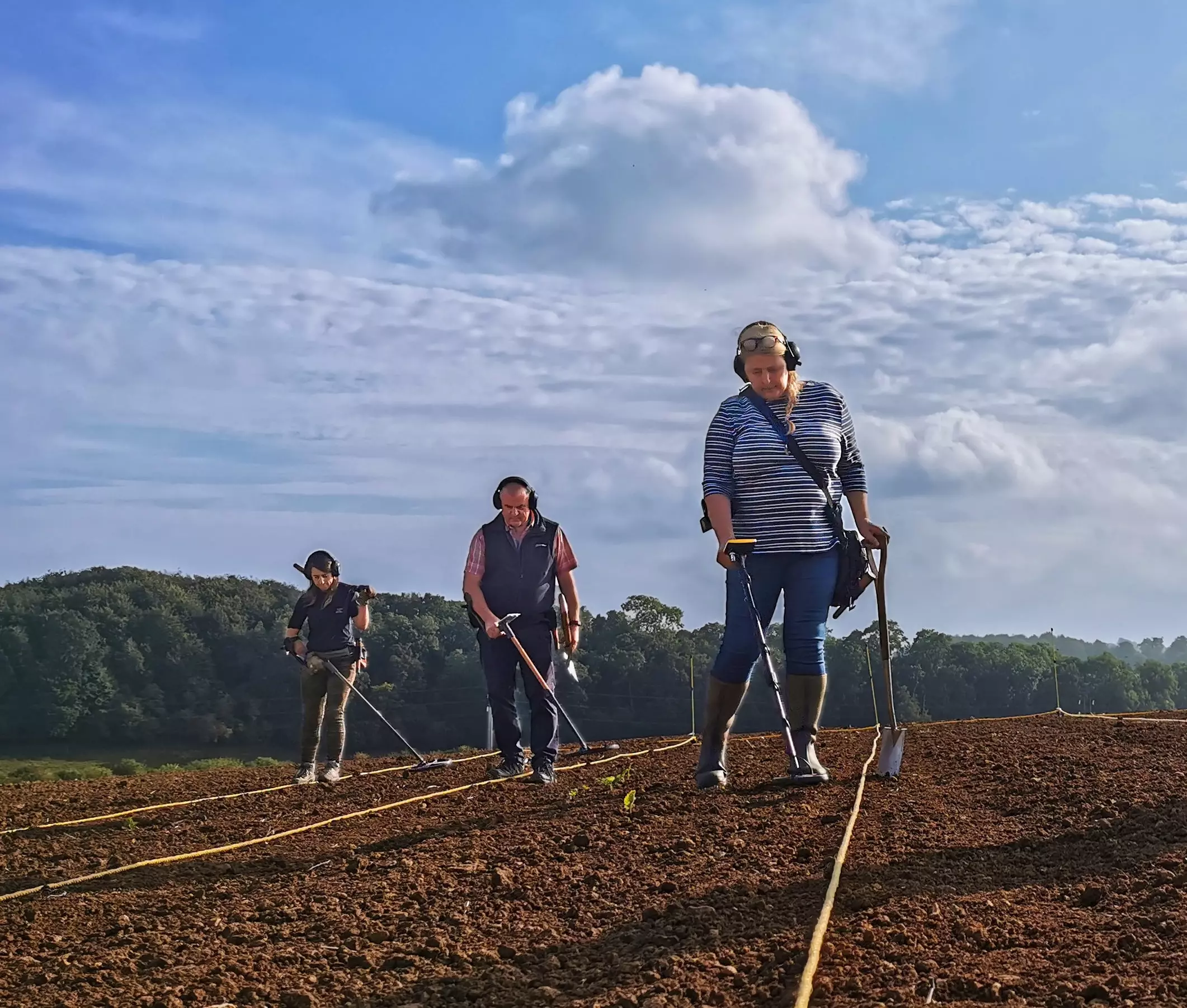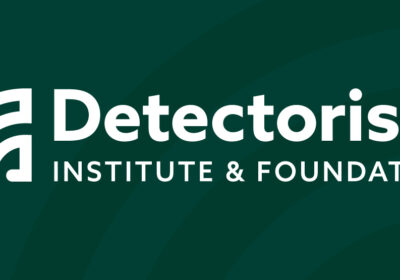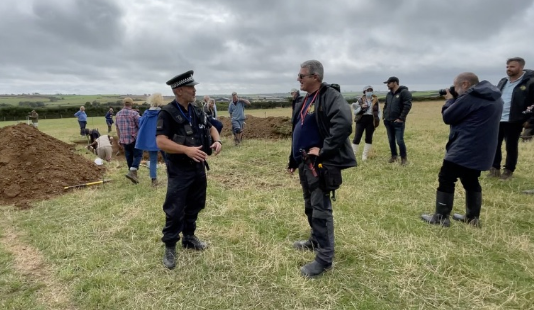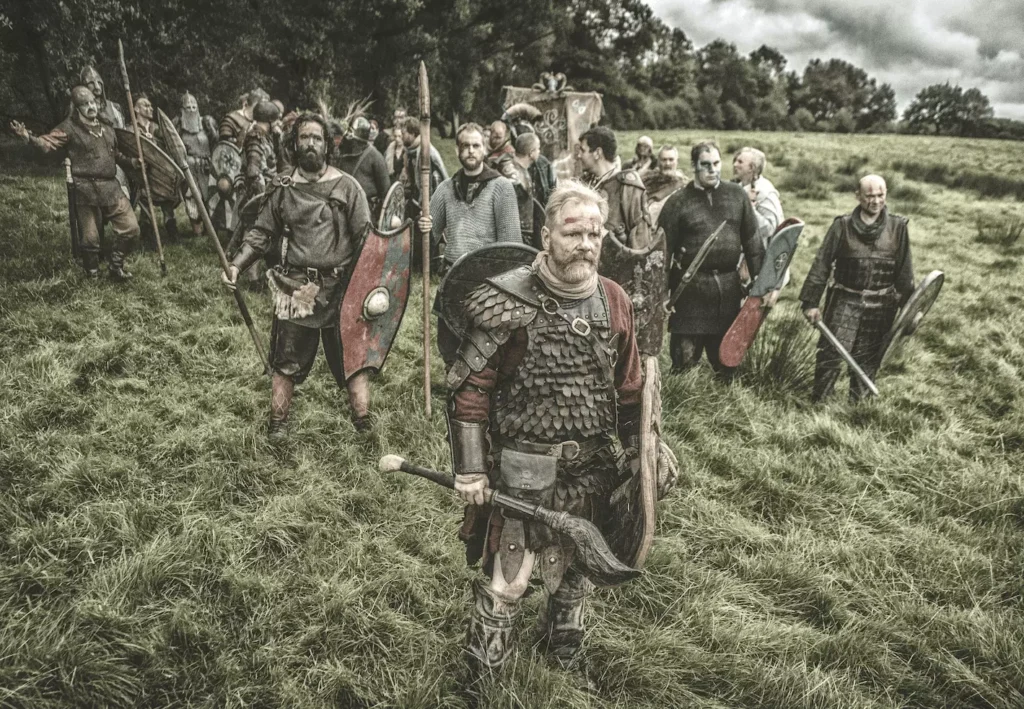The Detectorists Institute & Foundation (DIF)
We are a not-for-profit professional body and registered charity in the UK, recognised with a prestigious National Education Award. Our Institute focuses on research and education, and is asset-locked with the Foundation, which is Britain’s only registered charity dedicated to supporting detectorists and stakeholders.
The DIF supports the interests of all stakeholders within the detecting sector. We welcome membership from detectorists, as well as professionals and enthusiasts from the heritage sector, including archaeologists, historians, and landowners. We also invite worldwide members and individuals who support our conservation-focused approach to join us.
For UK Members, central to our initiative is the DIF: Triple-lock Code.
The DIF has pioneered an integrated approach to fieldwalking and metal detecting as part of the SPIA Survey. The Systematic, Partial, and Intensive Artefact Survey employs a consistent skillset from Practitioner Detectorists who are educated in archaeological principles.
Join our DIF campaign to highlight the significance of topsoil finds as indicators of human activity and dating evidence. Save our portable heritage, support the detecting of sites and trenches before mechanical excavation and infrastructure development.
Seen across the world by over 1.3 million Time Team viewers, one of Britain’s largest Roman villas discovered through the combination of landscape archaeology and detecting principles: Research, visual observation and the SPIA Survey Approach.
The DIF Detectorist’s broad scope of interest considers artifacts of all materials key to creating a contextual landscape. The ability to distinguish between Roman hypocaust and a Victorian brick is as fundamental as differentiating a shilling from a sestertius.
Select HD 1080p ‘Click on Play’ DIF: Episode One
DIF Methodology:
The metal detector, a sophisticated instrument, when utilised in combination with fieldwalking provides dating evidence. This integrated, non-intrusive method, along with geophysical surveys, is an important addition when evaluating archaeological sites.
The SPIA Survey, provides a systematic approach to: Desk research, planning preparation detailed in a Written Scheme of Investigation, onsite evaluation and setting out, detector and visual survey, retrieving targets and spatially recording finds in line with agreed discard policy, spoil management, small finds examination and collation, archive submission to Museum Collections, comprehensive geolocation reporting for final publishing and HER Event Number allocation.

Aims and Principles
Based on archaeological principles and values, the DIF promotes the benefits of embedding metal detecting and fieldwalking into professional practice, as part of a systematic and consistent approach.
In recognition of the expert level of experienced detectorists and combined with a national educational program based on archaeological practices, amateur Archaeo-Detectorists and professional Practitioner Detectorists have the opportunity with community and commercial projects, to become part of the archaeological team.
Aims and PrinciplesNational Resource Hub
The DIF National Resource Hub is a library of interesting, informative and educational content to be regularly updated with any new developments published within the detecting heritage sector. The Resource Hub available to DIF Members, contains reports, case studies, methodologies, guidance and training for the benefit of all stakeholders, including landowners.
Resources
Commercial and Community Archaeology
Commercial and Community Archaeology
Time Team
Time Team
Celebrating archaeological discoveries made by detectorists
Celebrating archaeological discoveries made by detectorists
Your membership will help to make a difference in heritage conservation.
Your membership will help to make a difference in heritage conservation.
Unique across the world, the DIF Advisory Board
Unique across the world, the DIF Advisory Board
Our role in the non-intrusive Survey.
Our role in the non-intrusive Survey.
News

The DIF’s Tom Redmayne – At the forefront of self-recording
The PAS database and self-recording On 23rd May 2023, the PAS sent out an invitation to key representatives of the UK metal detecting organisations to attend a “Finds recording day” at the British Museum. Delegates were from PAS, DIF, AMDS, NCMD, A&MD magazine and Sassy Searchers. The meeting was an opportunity to introduce the delegates […]

The DIF’s Alix Smith – Determining the location and extent of a Roman town.
METAL-DETECTING SURVEY, Summer 2023 For me, metal detecting has always been about the archaeology. Although often fascinating and beautiful in themselves, the true value of the objects I recover lies in the information they provide about the wider landscape, both historic and geographic, in which they were lost. I have always believed that metal-detecting should […]

Forum
For members registered on the forum under their own names rather than pseudonyms, our forum provides an opportunity for all detectorists, stakeholders, corporates, and friends of the DIF to raise topics of interest and discuss issues in a friendly, beneficial, and helpful way
ForumJoin our Mailing List
Join our journey in preserving history and heritage by subscribing to our mailing list. Receive regular updates that highlight our dedication to conservation and connect with like-minded enthusiasts.


Fascinating and informative, Detectorists World is an online magazine that brings you stories from the UK, Europe, and beyond. In partnership with the DIF, we feature interviews, videos, and podcasts that highlight the conservational importance of historical finds of significance. We delve deeper than the average retweet, investigating the facts behind discoveries. Have you a great story to tell?
Find Out More